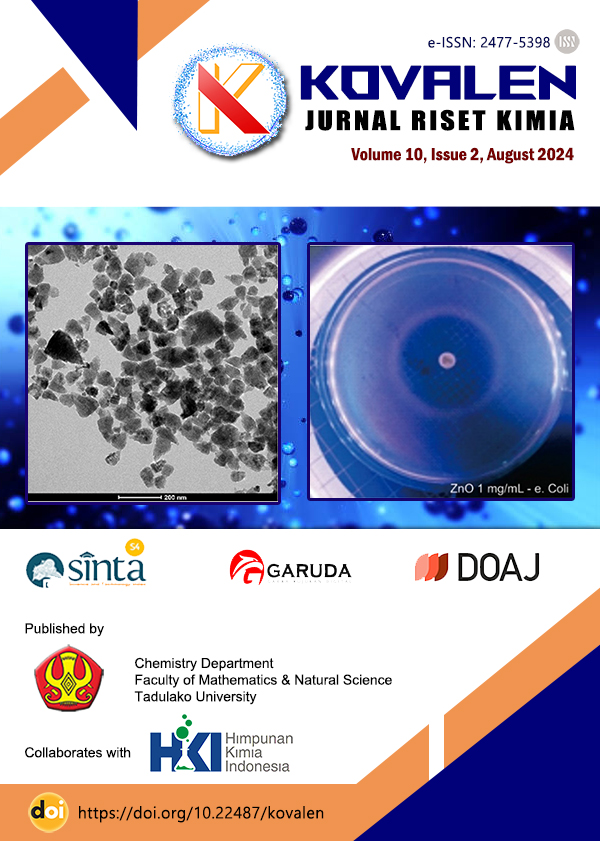Main Article Content
Abstract
The Citarum River is included in the category of the most polluted river in the world because it contains chemicals that can reduce air quality. This pollution not only affects air quality but also threatens public health and the surrounding ecosystem. Heavy metals, especially Cu(II), are one of the contaminants that have exceeded the threshold and can cause serious health impacts, including organ damage and nervous system disorders. Hydrogel is an alternative adsorbent that is widely used in various fields, especially in the field of air purification. Hydrogel has the ability to absorb and adsorb contaminants. In particular, Carboxymethyl Cellulose (CMC) hydrogel and pectin hydrogel have attracted much attention for safe water purification because they are non-toxic and have good biodegradability and biocompatibility. The researchers conducted a study on the adsorption of Cu(II) metal using a Carboxymethyl Cellulose (CMC) hydrogel adsorbent and pectin in a 2:1 composition through the Freeze-thaw method. FTIR analysis of the CMC/pectin hydrogel confirmed the presence of C-O-, O-H, C=O, C-H, OH bending, and COOH stretching vibrations. Based on BET analysis, the hydrogel has micropores, a type 1 isotherm, and a surface area of ​​1,889 m2/g. The Langmuir isotherm model was used to determine the ideal adsorption conditions to be a concentration of 298 ppm, an adsorption capacity of 1,0918 mg/g, and an adsorption efficiency of 13,485%.

